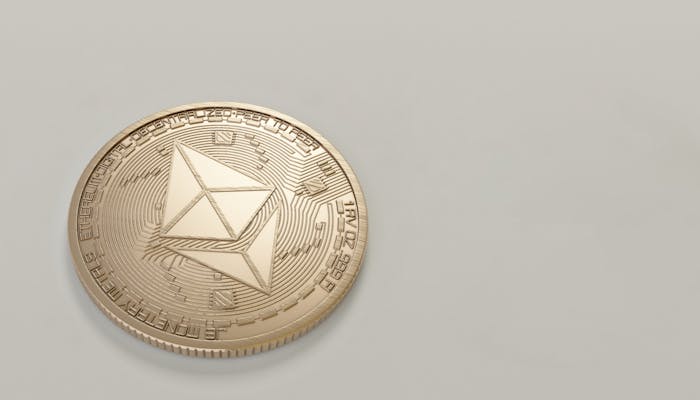Ethereum's DeFi Innovations: Pioneering a New Era of Financial Inclusion

Decentralized finance (DeFi) has emerged as a revolutionary force in the financial industry, offering a new way to access and manage financial services without traditional intermediaries. At the forefront of this movement is Ethereum, a blockchain platform that has become synonymous with DeFi innovation. In this article, we will explore how Ethereum’s DeFi ecosystem is pioneering a new era of financial inclusion and reshaping the way we think about finance. With the emergence of platforms like Ethereum iFex Ai, individuals now have unprecedented access to a wide range of financial information, all without the need for traditional intermediaries.
The Rise of DeFi on Ethereum
Ethereum’s journey into DeFi began with the launch of its blockchain in 2015, offering developers the ability to create smart contracts – self-executing contracts with the terms of the agreement directly written into code. This innovation laid the foundation for a wide range of decentralized applications (dApps), including those in the DeFi space.
Over the years, Ethereum has seen explosive growth in DeFi projects, fueled by the platform’s flexibility and developer-friendly environment. The total value locked (TVL) in Ethereum-based DeFi projects has surged, reaching billions of dollars. This growth can be attributed to the platform’s robust infrastructure, active developer community, and high level of security.
- Ethereum (ETH) Crypto Price Predictions 2024: Cosmic Kittens (CKIT) to Soar to New Heights?
- Crypto Memecoin Celebrates Elon Musk’s Birthday with a Revolutionary Ethereum Token
Ethereum’s Role in Financial Inclusion
One of the key aspects of Ethereum’s DeFi ecosystem is its role in promoting financial inclusion. Traditional financial systems often exclude large segments of the global population, particularly in developing countries where access to banking services is limited. Ethereum’s DeFi applications are changing this narrative by providing anyone with an internet connection access to a wide range of financial services.
By removing the need for intermediaries such as banks and financial institutions, Ethereum’s DeFi ecosystem allows users to directly interact with financial products. This not only reduces costs but also opens up new opportunities for individuals who were previously underserved or excluded from traditional financial systems.
Innovative DeFi Applications on Ethereum
Ethereum’s DeFi ecosystem is home to a diverse array of applications, each offering unique solutions to various financial needs. Decentralized exchanges (DEXs) like Uniswap and SushiSwap allow users to trade cryptocurrencies without relying on a central authority, providing a more secure and efficient way to exchange assets.
Lending protocols such as Aave and Compound enable users to lend and borrow assets in a decentralized manner, with interest rates determined by supply and demand. This opens up new avenues for earning passive income and accessing credit without the need for a traditional bank.
Stablecoins like DAI are another innovation made possible by Ethereum’s DeFi ecosystem. These cryptocurrencies are pegged to a stable asset, such as the US dollar, providing a reliable store of value and a medium of exchange for users around the world.
Challenges and Risks of DeFi on Ethereum
While Ethereum’s DeFi ecosystem offers numerous benefits, it also comes with its own set of challenges and risks. One of the main challenges is the security of smart contracts, which are susceptible to bugs and vulnerabilities. Several high-profile hacks and exploits have occurred in the DeFi space, highlighting the importance of conducting thorough audits and implementing robust security measures.
Regulatory uncertainty is another challenge facing Ethereum’s DeFi ecosystem. As governments around the world grapple with how to regulate cryptocurrencies and DeFi, there is a risk of increased scrutiny and potential restrictions on these technologies. This could hinder the growth of DeFi and limit its impact on financial inclusion.
Ethereum’s Impact on Traditional Finance
Ethereum’s DeFi innovations are not only reshaping the way individuals access financial services but also challenging the traditional financial industry. Incumbents in the finance sector are now facing competition from decentralized protocols that offer similar services with greater efficiency and lower costs.
This disruption has forced traditional financial institutions to adapt to the changing landscape. Some banks and financial companies are exploring ways to incorporate blockchain technology and DeFi principles into their operations, recognizing the potential for greater efficiency and customer satisfaction.
Future of DeFi on Ethereum
Looking ahead, the future of DeFi on Ethereum looks promising. The upcoming upgrade to Ethereum 2.0, which will introduce a new consensus mechanism called proof-of-stake, is expected to improve the scalability and security of the platform, making it even more attractive for DeFi applications.
In addition, ongoing research and development in areas such as layer 2 scaling solutions and interoperability between blockchains are likely to further enhance the capabilities of Ethereum’s DeFi ecosystem. These advancements could unlock new possibilities for DeFi, expanding its reach and impact on financial inclusion.
Conclusion
Ethereum’s DeFi ecosystem is at the forefront of a financial revolution, offering a glimpse into a future where financial services are accessible to anyone, anywhere. By leveraging blockchain technology and smart contracts, Ethereum has created a decentralized financial system that is more efficient, transparent, and inclusive than ever before. As the ecosystem continues to evolve and grow, it has the potential to truly pioneer a new era of financial inclusion, empowering individuals around the world to take control of their financial destinies.
Disclaimer: This is promotional marketing content. The presented material by no means represents any financial advice or promotion. Be sure to research and acknowledge the possible risks before using the service of any trading platform.





